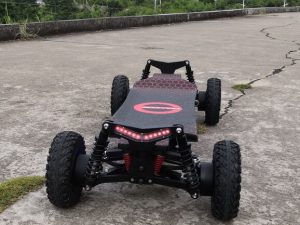Skateboarding can be a really fun activity, but there are some things you definitely want to avoid doing in order to stay safe. Follow these tips and pointers on what not to do while skateboarding.
Don’t skateboard without the proper safety gear
The importance of protecting oneself while riding cannot be stressed enough by a professional skateboarder. A helmet is absolutely essential to prevent serious head injuries from falls. Wrist guards and knee pads also save skaters from trips to the emergency room on a regular basis by cushioning impacts. Finally, never skate in sandals or open-toe shoes as they leave your feet and toes vulnerable if they get caught under the moving e-board. Safety gear is a small price to pay to avoid accidents that could cut short a skate session, or worse. Your body is what allows you to keep shredding, so shield it with the proper athletic protection.
Don’t skateboard in risky areas
Choosing the right location to ride is essential to avoiding accidents. Steep slopes and hills are tempting to bomb down but they provide little room for error and increase speed dramatically, making control difficult and falls more forceful. Busy roads with cars present an obvious hazard and require split-second reaction times. Wet floors or surfaces where moisture has gathered lose friction quickly, causing easy slippage. These types of areas are not worth the risk when there are safer options available. Scout alternate spots without such dangers. Part of being a conscientious skateboarder is self-preservation, but also having regard for others. Placing yourself in risky situations needlessly could endanger not just your safety, but those around you as well.

Don’t engage in risky tricks or stunts
It’s important to be honest with yourself about your current skill level. Attempting maneuvers that are beyond your abilities is a recipe for injury. Jumping gaps, grinding features, and other advanced tricks require extensive practice in safer environments before taking them to streets or parks. Know your limits and don’t push them without proper preparation. Pedestrians and property owners also have a right to feel secure, so avoid showboating near others or areas not meant for skating. Proficiency takes patience. Listen to your own skill progression, not pressure to prove yourself. With time spent honing fundamentals somewhere controlled, you’ll develop the skillset to push boundaries responsibly later. Stay focused on self-mastery, not risky stunts, for long-term progression and health.
Don’t skateboard under the influence
Substance use and skateboarding do not mix. Even small amounts of alcohol or drugs slow reaction time, impair judgment and increase the likelihood of accidents. Exhaustion also degrades performance and focus. While skating requires concentration and coordination, intoxicated and fatigued heads just aren’t clear, sharp, and able to respond well in emergencies. Slips resulting from a compromised state could mean bodily harm or legal troubles. As role models, pro skaters must stay away from substances while riding or risk promoting irresponsible behavior to followers. Skating sober keeps facilities open for others to enjoy as intended too—free of legal or liability issues caused by rule-breakers. Your health, safety, and those of spectators around you depend on control over the e-board and body at all times. Make responsible choices by skating drug and drunk-free for the sake of a long career and a good example to the community.

Don’t disrespect others while skateboarding
Part of being a good community member is considering how our activities might affect those around us. As skaters, we rely on public parks, plazas, and streets, so it’s important to respect the shared use of these spaces. Yield to pedestrians, don’t block walkways or disrupt events, and be mindful of noise from e-boards that could disturb others. Obey signs that prohibit or restrict skating out of respect for different user needs. Skate friendly with locals to preserve our welcome. Representation matters too—how we conduct ourselves shapes perceptions. Let’s lead by example with kindness, share stoke for fun, and clean up our spot. United, we can maintain good relations and keep doors open to skate. But it starts with each rider choosing to care about fellow humans, obey fair rules, and skate courteously in public areas.
FAQs
- Q: What should I do if I get injured skateboarding?
- Stop activity, apply first aid like ice or pressure, then seek medical help from parents or professionals if pain or symptoms persist.
- Q: How long until I’m ready for skateparks?
- Most skateparks have beginner sections, but wait until you’ve mastered board control fundamentals like turning, stopping, and balancing at lower-risk locations first.
- Q: What’s the best way to learn new skateboarding tricks?
- Take a video of yourself, then review it with more experienced skaters who can provide pointers on where your form needs fixing. Also consider taking a lesson for personalized instruction.
- Q: How can I progress my skateboarding skills safely?
- Set small, achievable goals and perfect the basics before advancing. Use protective gear, start easy, and build up your skills step-by-step rather than jumping ahead. Have fun but promote long-term enjoyment over short-term thrills.
- Q: What are some good skate spots for beginners?
- Flat ground like parking lots, and tennis/basketball courts. Skate parks often have separate areas for newcomers too. Find empty neighborhoods on weekday mornings for practicing without as much traffic around you. Stay aware!
Read More
- Eco Friendly Electric Skateboard – Ecomobl
- Off Road Electric Skateboard Top Features – Ecomobl
- Electric Longboard Price Guide – Ecomobl
- Are Electric Skateboards Dangerous – Ecomobl
- Electric Skateboard Wheel Upgrade – Ecomobl




